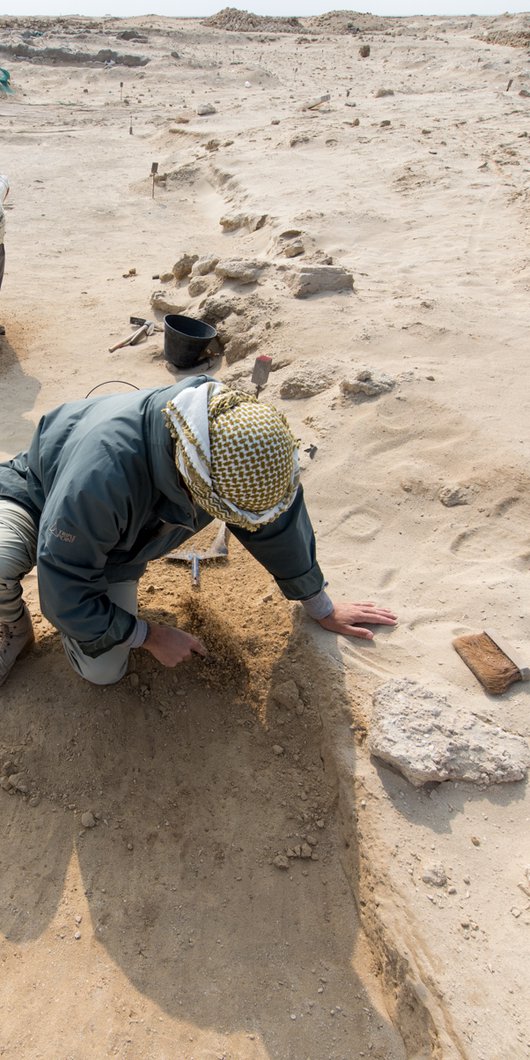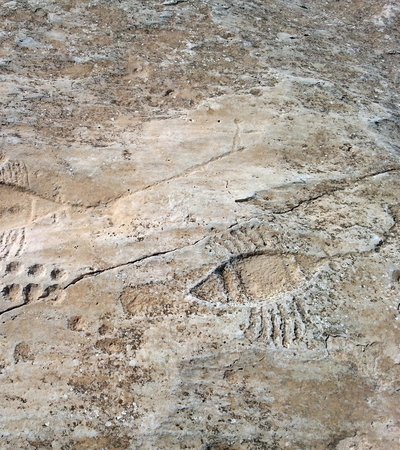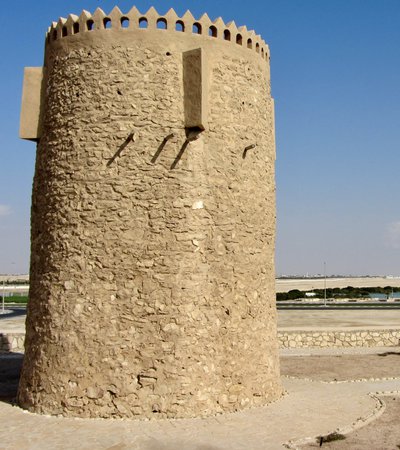We engage in archaeological fieldwork daily and are continuously excavating and conserving heritage structures across Qatar.
Preventive Archaeological Activities
Rescue and preventive archaeology make up most of our archaeological activities in Qatar. These two disciplines are the most useful tools to answer the needs of a fast-growing country and an engaged population keen to protect its heritage.
The work comprises of desktop studies, field surveys, recording of buildings, watching briefs, trial pitting and rescue excavations. All of which are performed prior to any development project and are essential to assessing whether a development project affects or alters heritage assets.
Developers in Qatar are forced to obtain a No Objection Certificate (NOC) from Qatar Museums during the design phase of their projects.
Cultural Heritage Database - QCHIMS
In 2009, we started recording field surveys, remote sensing and marine geophysics project data through a cooperative project between Qatar Museums and Birmingham University. The project was named the Qatar National Historic Environment Record (QNHER).
Since then, we have implemented and launched a system extension, Qatar Cultural Heritage Information Management System (QCHIMS), designed to manage all key datasets in a central, integrated database, easily accessible by all staff and stakeholders. It integrates the data of QNHER, which manages the major datasets about heritage areas. QCHIMS is an effective and sustainable working tool. The database is bilingual (Arabic and English).
Urban Fabric of Old Doha
In the first half of the 20th century, the urban fabric of Doha was largely made up of one- and two-story houses. These consisted of rectangular dwelling units surrounding a courtyard that might have included arcades on one or more sides. The buildings were clustered closely together, separated only by narrow alleys. The inner courtyard served as the core of the house and was open to the sky, providing ventilation and sunlight. The houses were usually constructed using materials such as stone, mud and plaster. They would usually be covered with a flat roof supported by beams cut from mangrove trees. Many of these traditional buildings have been reused and modified to meet the needs of modern living.
In the mid-1950s building techniques changed with the introduction of concrete and cement blocks – and within 20 years they were almost entirely made of concrete and cement blocks. These early modern buildings often imitated the design of traditional houses, with an inner courtyard and rooms aligned along the sides, two or occasionally three stories high. Later, the urban fabric of Doha was transformed yet again, as modern and high-rise buildings were built with concrete, cement blocks, metal and glass, in a distinctly contemporary design.
Cultural Tourism
Our work also extends to cultural tourism, developing the concept itself and defining the importance of it. We place a strong emphasis on engaging and mobilising local communities to participate in cultural life, as well as our international visitors. As part of this work, we produce self-guided tours of various lengths that offer visitors a personalised journey through our museums, galleries and heritage sites.
Cooperative Projects
Our team works on a wide range of projects in cooperation with international organisations, including:
- Qatar Islamic Archaeology and Heritage Project (QIAH)
Created in 2009 in collaboration with the University of Copenhagen, the project aims to investigate, preserve and present Islamic archaeology and the natural heritage of northern Qatar to the public. It has a strong focus on Al Zubarah and is one of the largest heritage projects in the Gulf region involving a multitude of specialists. Learn more - Wales Qatar Archaeological Project
Part of the QIAH and in collaboration with the University of Wales Trinity Saint David, this project is mainly concerned with research, excavation and surveys of a number of coastal sites in northern Qatar, such as Rubayqa and Ruwayda. Learn more - Qatar National Historic Environment Record (QNHER)
This is a five-year collaboration project that involves the University of Birmingham and QM, researching the terrestrial and marine areas of Qatar. A major component of the project has been the introduction and development of a National Historical Environment Record for the State of Qatar. - South Qatar Survey Project (SQAP)
An interdisciplinary research cooperation between the German Archaeological Institute (DAI) and QM initiated in 2012, this project aims to undertake archaeological surveys and excavations in the southern part of Qatar and train Qatari and German students in archaeological fieldwork. Learn more (PDF)



